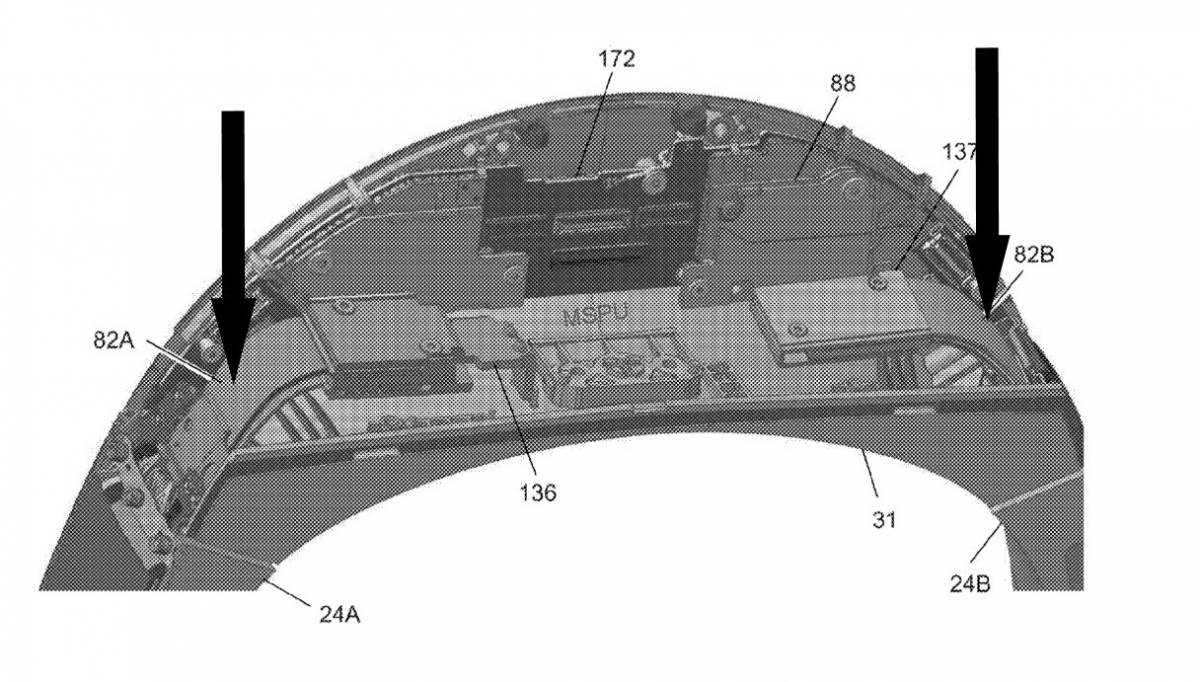
With the majority of virtual reality headsets simply being containers for your phone or screens tethered to your PC, it’s sometimes difficult to remember that the HoloLens contains a full PC and dedicated SoC performing millions of operations constantly to evaluate the outside world and generate a virtual overlay.
All of that generates a lot of heat, and the fact that users do not complain of their heads boiling is an indication of good thermal engineering on Microsoft’s side.
A recent patent granted to the company by the USPTO provides some insight into the techniques used, with Microsoft developing a custom flexible thermal conduit which allowed Microsoft to transfer the heat from the chipset in the visor across the hinge to special “heat tunnels” in the headband.
The patent describes the thermal conduit being constructed of thin layers of thermally conductive material, such as metal or graphite, which is joined together at the ends, but not where it cross the joint, allowing some movement and therefore allowing the heat to cross from one region to another efficiently.
While the HoloLens is a rather specialist application of the technology, it could also be used for example to move heat from the base unit of the laptop across the hinge to the screen, which tends to present a large radiative surface and which could therefore allow passive cooling without the use of a fan. Given that all Microsoft’s PCs have been 2-in-1s we hope the technology would also be licensed out to PC OEMs who produce hybrids and even regular laptops, both of which could benefit from this technology.







